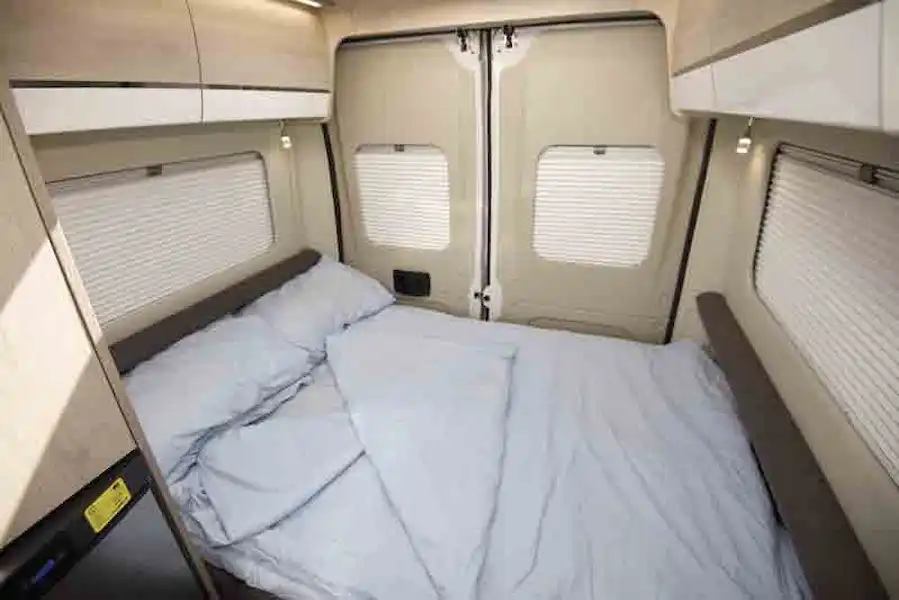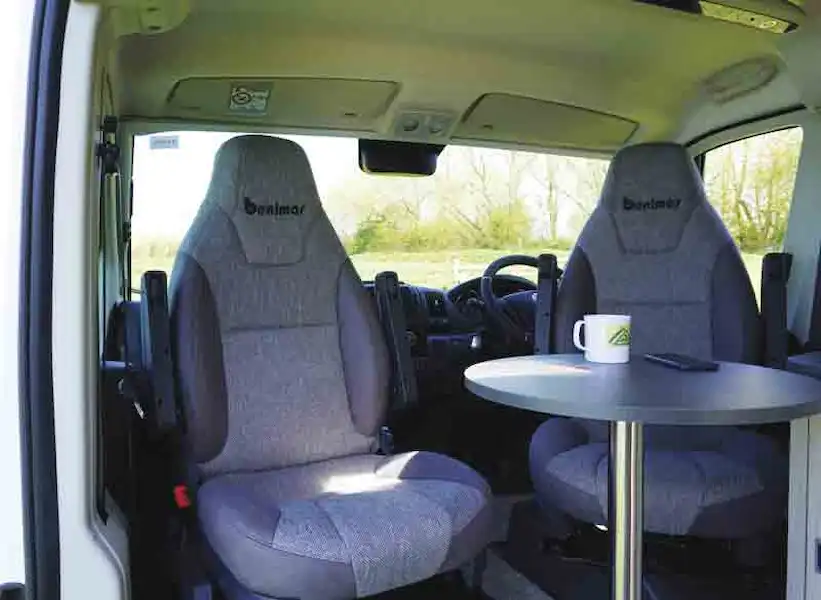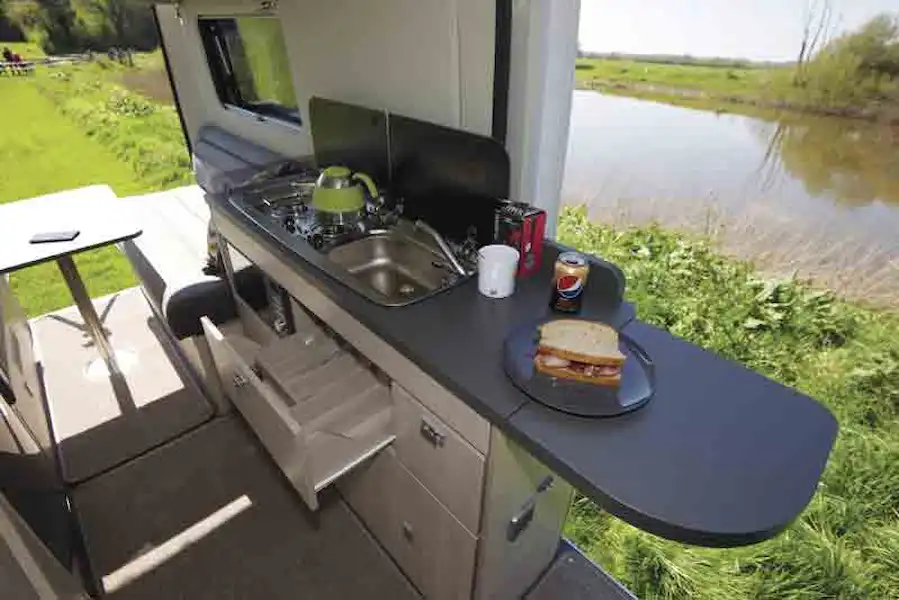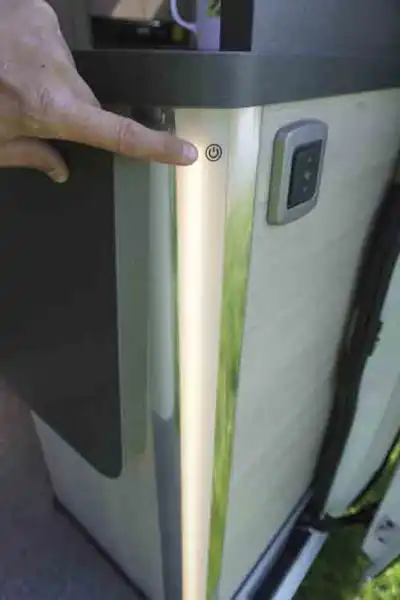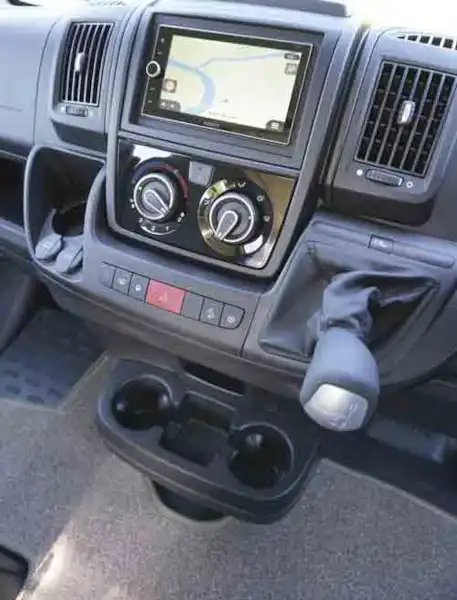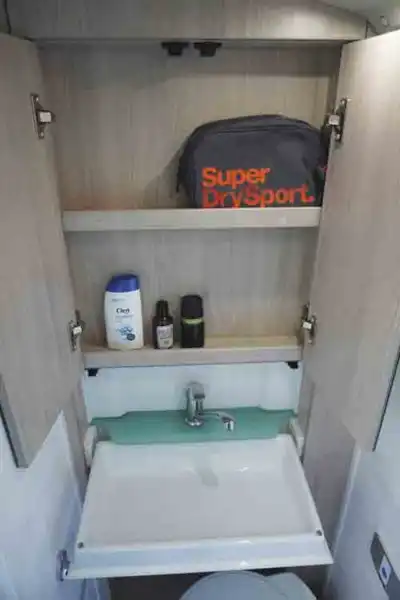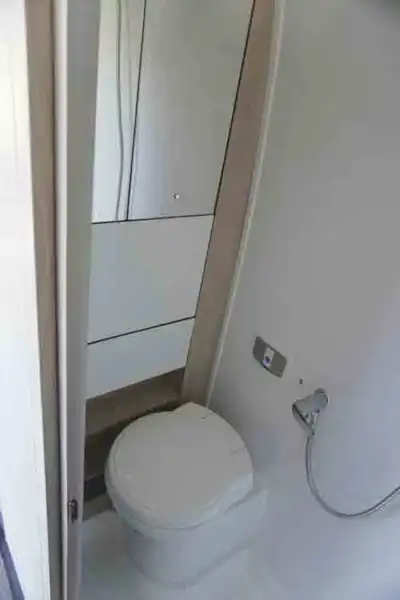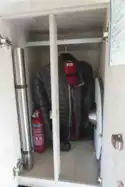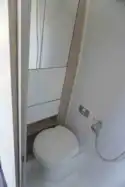Key Features
| Model Year | 2019 |
| Class | High top |
| Base Vehicle | Fiat Ducato |
| Price From (£) | 43,995 |
| Length (m) | 5.99 |
| Berths | 2 |
| Belted Seats | 2 |
| Main Layout | Rear Lounge |
At a glance
Full review
Following the success of Benimar’s coachbuilt models - Mileo, Tessoro and Primero - comes the Benivan range, the Spanish brand’s first campervans to be sold here. Rather than being built in Spain, though, the two Benivans – a six-metre model with two travel seats and a longer, 6.36m version with four seatbelts but still two berths – are built at Trigano’s Auto-Trail factory in Grimsby.
So, the Benivan 120 is the sister vehicle to the Chausson Twist 594 (differences are down to spec), while also being closely related to Auto-Trail’s Tribute and V-Line ranges and Roller Team’s new Toleno. It’s worth comparing all these vehicles if you’re in the market for a rear lounge campervan – for example, the Chausson is around £1,700 cheaper (even with the Travel Pack) than the Benivan and it comes in metallic silver, but without the sat-nav and with a less powerful (115bhp) engine.
Certainly, the Benimar’s standard equipment impresses. In fact, the 120 is so comprehensively equipped that there’s only one factory option – an automatic gearbox. It comes fully loaded with kit, although of course there’s no possibility of choosing the exterior colour, the interior trim, or adding anything but dealer-fitted accessories such as a bike rack.
A six-speed manual gearbox
Considering its sub-£45k price point puts the Benivan 120 in the budget category, you wouldn’t guess it when you’re in the driving seat. The leather steering wheel sports controls for the Bluetooth and radio, while an additional stalk offers cruise control. The multimedia system has a DAB radio, sat-nav and acts as the monitor for the built-in camera when reverse gear is selected. Two airbags are standard, as well as manual air-con, electric windows and heated, electrically adjustable side mirrors.
The only hint of ‘budget’ comes from the untrimmed rubbery armrests on the cab seats. But each perch does sport a pair of them. The seats themselves have been neatly retrimmed to match the rear lounge and are in a pleasing tweed-like material with suede-style bolsters.
The test vehicle had the six-speed Comfort-Matic gearbox, a robotised manual that mimics the actions of an automatic. It takes a little getting used to, as it doesn’t drive exactly like a regular torque converter gearbox. Where the Comfort-Matic differs is in how it changes – the shifts are not quite as slick – and there’s no ‘creep’ when you’re in drive but not pressing the accelerator.
However, you can control when it shifts by varying the accelerator pressure slightly – ease up a fraction on a straight bit of A-road, for example, and it’ll change into sixth. Impressively, it also shifted into a lower gear when descending a hill to use engine braking to slow the vehicle down – not all automatic gearboxes can do this. But accelerate hard, say when joining a roundabout, and its reactions can seem confused.
Most campervans tend to be quite low-geared and, with the usual six-speed manual, you spend quite a lot of time shuffling up and down the gears, so it’s a bonus to have a robot do it for you. Whether it’s worth the extra £2,100 depends on your own driving style, so take a test drive before you decide.
The combination of the torquey 150bhp engine and the Comfort-Matic ’box means that this compact ’van can be hustled along at a good pace and few buyers will be disappointed with its turn of speed.
Two side settees – and two lounges
At first glance you’ll think that the only lounging area is to the rear of the vehicle, where there are two side settees, but a second lounge can be formed in the cab by swivelling the seats. There is a storage unit with a section of worktop behind the driver, but it’s set back and doesn’t get in the way, while providing a useful surface with the seat rotated.
The passenger seat’s adjustment and swivelling is unimpeded by any cabinets but you do need to be aware of the step down from the cab into the living area.
What makes this front seating more versatile is the fact that there’s a pole-in-the-hole circular table that sits between them. This can be left up at night to form a breakfast bar for that morning cuppa.
The coffee table lives in the wardrobe, together with its leg, while there’s a larger rectangular dining table that’s clipped to the cabinet behind the driver’s seat. The only niggle is that you get one leg, so you can only use one top at a time. If you want to use both tables, then you’ll only need to spend £20 online getting a second leg.
The rear lounge offers two 1.40m-long settees and is bordered by two opening windows in the barn doors plus two larger opening side windows and a modest rooflight. Open the rear doors on a sunny day and you feel connected to the outside world – at the photoshoot it was a delight to be parked up by a river, enjoying lunch with a view.
A well-equipped galley
The kitchen offers the sort of hob that is common in a small campervan – a two-burner combination cooker – and built-in sink unit. It does offer hot and cold water, thanks to the standard Truma Combi 4E heating system (the E denoting that it’s the version that can also be powered from 230V mains electricity and not just gas). The Combi is also linked to Truma’s iNet system, so you can operate it from your smartphone. You won’t be cold in the Benimar, either, as it offers Grade III insulation.
The gas itself is provided by an underslung 25-litre LPG tank, with a level gauge mounted on the dashboard – an unexpected bonus on a budget vehicle. As well as not having to mess around lugging hefty cylinders and mucking around with gas spanners, this also neatly side-steps the issue of getting your gas refilled when you’re in Europe. You will need to pack a few different adaptors, depending on which countries you plan on visiting, but you’ll find LPG is widely available in both continental Europe and the UK.
The gas system not only powers the heating/boiler but also the three-way Dometic fridge when no hook-up is available. The latter offers a useful 95 litres of capacity.
A bonus is the mains-powered 800W microwave that’s built into the lower kitchen cabinets. The rest of the kitchen is refreshingly free from bells and whistles, instead putting the emphasis on storage. Not having to squeeze in a space-robbing gas locker helps here and you get two decent-sized drawers, three large cupboards and two overhead lockers. You’ll be able to keep all your kitchen and cooking kit in the galley’s cabinets, which isn’t always the case, but more drawers would mean easier access and less bending down at floor level.
There’s also the additional locker behind the driver’s seat that you could also employ for extra galley storage.
Washroom with shower
Opposite the kitchen area is the washroom, accessed via a normal door rather than a possibly fiddly but space-saving tambour door. It uses an all-in-one white plastic shower tray (with only one central drain point), with an electric flush Thetford swivel bowl loo mounted to the left.
Opposite the toilet is a bank of cabinets, with two lower shelves and an upper double-door mirrored cabinet that’s also shelved for your toiletries. A flip-down rectangular basin sits between the two storage units and is of a good practical size, with a narrow shelf behind it for your toothbrush and toothpaste. There’s a separate tap for the washbasin and it’s a reasonable-quality metal item.
The showerhead is a push-to-spray metal fitting and feels weighty and durable. One niggle is that the shower’s mixer tap is inset next to the toilet, so it’s easy to accidentally knock it.
While the shower/toilet room offers 1.86m of headroom and three LED spotlights, it does also have a clingy curtain to keep spray off the cabinet and loo, and there’s only a small mushroom vent for the steam to escape through. All in all, it’s a usable space when you want to use your own facilities.
Good quality blinds
You’d expect a budget van conversion to sport flimsy feeling roller-style blinds to seal off the windows at night-time, so it’s a pleasant surprise to find pleated blinds and flyscreens on all the habitation area glazing. These feel good quality and, together with the padded vinyl wall coverings, give the Benivan a more premium feel than you might expect.
Another pleasant surprise is that the cab comes with built-in Remis blinds as standard. So, there’s no messing about with press-studs, suckers, or having to waggle a complex curtain around the cab seats. A big thumbs up.
There’s only one bed and it can only be configured as a transverse double. To set it up, you lift out the well-made beech-slatted bases and slide them together over the central walkway. The backrest cushions are then placed in the centre to form a 1.86m by 1.40m double bed that is set at the perfect height for easy access. You can sit up in bed to read, but the top section of each backrest cushion stays put, fixed to the sides of the campervan, and these limit the comfortable bed length if you’re tall.
More importantly for many, the transverse double bed arrangement does, of course, mean one person having to climb over the other to get to the loo in the night. Some rival six-metre rear lounge van conversions manage to accommodate longer rear settees, which can act as longitudinal single beds; if you want such a set-up in a Benivan you’ll need to opt for the 6.36m extra-long 122 model (priced from £46,495).
Also at the rear, there are four large lockers overhead for your clothing and there’s also a small wardrobe with a hanging rail that’s located next to the bedroom, above the fridge.
Underneath the bed, on the offside, you’ll find the Truma Combi boiler unit and the Sargent EC176 charging system, which has built-in 12V fuses and the consumer unit trip switches. It’s easy to get at in the daytime, although it’s concealed behind a cupboard door.
There is a variety of lighting options in the rear of the Benivan, including four individually adjustable reading lamps – which means you can sleep either way around if your pitch has a slight slope and you can’t be bothered with the faff of levelling.
There are also LED ambient strip lights at the upper edge of the roof cabinets that give off a pleasant glow at night-time. Again, it’s more upmarket than you might expect in a budget campervan.
While it’s great that the 12V system is topped up via a roof-mounted 100W solar panel, the leisure battery itself is of a lower capacity than some at 72Ah unit. We’d suggest you get your supplying dealer to upgrade this to at least a 100Ah unit – there’s room under the sofa to add a larger battery box to house this.
This review was originally published in the July 2019 issue of MMM - the UK's best-selling motorhome magazine. Click here to buy back issues in digital format.
Expert motorhome advice to your door!
Why not subscribe to one of our fabulous magazines and get expert advice, travel ideas, technical help and all the latest news for your motorhome and your motorhome adventures!
Want to know more about MMM magazine?
Every month MMM has articles written by motorhomers who have been there and done it, from great UK and European (and further afield) tours, campsite reviews, owners' reports and DIY projects among other things. MMM's tests, reviews and expert buying guides are not to be missed. MMM's technical advice is a must and includes everything from weekend jobs to longer-term DIY projects. And much more!
About MMM magazineWant to know more about What Motorhome magazine?
Every issue of What Motorhome magazine provides essential buying advice for anyone looking to buy a new motorhome or campervan or upgrade their existing model. With a pedigree of over 30 years of offering the best motorhome and campervan buying advice, every issue of What Motorhome includes more new motorhome and campervan reviews than you will find in any other magazine.
About What MotorhomeWant to know more about Campervan magazine?
Campervan is the exciting monthly magazine that will give you all the inspiration you need to explore the world in your campervan. Every issue is packed with real-life campervanning experiences, inspiring travel ideas in the UK and further afield, the best campsites to stay on, campervan road tests and reviews of the latest models, and much more!
About Campervan magazine


